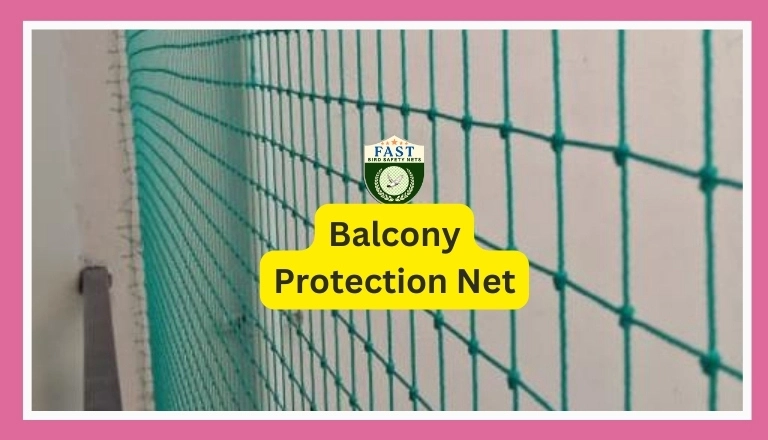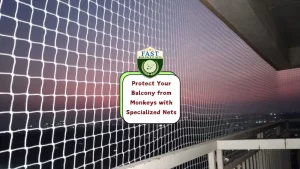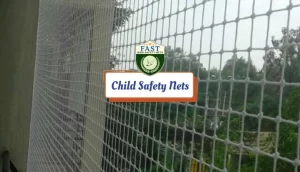Birds can often find balconies appealing for nesting, roosting, or scavenging for food. While their presence might seem harmless, it can lead to various issues such as droppings, damage to property, and health hazards. Bird netting is a practical solution to keep birds away from balconies while maintaining aesthetic appeal. Here are essential tips for effectively using bird netting for balcony protection.
1. Assess Bird Activity: Before installing bird netting, observe the balcony area to identify the types of birds frequenting it and their behavior. Different bird species may require specific deterrent methods. Note any nesting sites, roosting spots, or food sources that attract birds.
2. Choose the Right Netting Material: Select bird netting made from durable materials like polyethylene or nylon. Ensure the netting is UV-resistant and weatherproof to withstand outdoor conditions. Opt for a mesh size that prevents birds from entering while allowing sufficient airflow and visibility.
3. Measure Balcony Dimensions: Accurately measure the length, width, and height of the balcony to determine the amount of netting required. Consider any obstructions or architectural features that may affect the installation process. It’s essential to have precise measurements to avoid purchasing insufficient or excess netting.
4. Plan Installation Strategy: Decide on the installation method based on balcony layout and structure. Common approaches include attaching netting to balcony railings, overhead structures, or creating a canopy effect. Determine whether you’ll install the netting yourself or hire professionals for assistance.
5. Clean and Prepare the Balcony: Thoroughly clean the balcony surface to remove dirt, debris, bird droppings, and nesting materials. Repair any damaged surfaces or fixtures before installing the netting. Ensure the area is dry and free from obstructions to facilitate smooth installation.

6. Install Support Structures: Depending on the chosen installation method, install support structures such as poles, brackets, or hooks to secure the bird netting. Ensure these structures are securely anchored and capable of bearing the weight of the netting. Position them strategically to achieve optimal coverage.
7. Attach Netting Securely: Begin attaching the bird netting to the support structures, starting from one end and working systematically across the balcony. Use zip ties, clips, or stainless steel wire to secure the netting firmly in place. Ensure the netting is stretched taut to prevent birds from accessing the balcony.
8. Seal Potential Entry Points: Inspect the perimeter of the balcony for any gaps, openings, or access points where birds could enter. Seal these areas using additional netting, bird spikes, or sealant to create a complete barrier. Pay attention to corners, crevices, and gaps between structures.
9. Maintain Regular Inspections: Periodically inspect the bird netting for signs of wear, damage, or tampering. Check for loose or sagging sections that may require tightening or repair. Remove any debris or accumulated nesting materials to prevent potential hazards and maintain the netting’s effectiveness.
10. Monitor Effectiveness: After installing bird netting, monitor its effectiveness in deterring birds from accessing the balcony. Observe bird behavior and any attempts to breach the netting barrier. Make adjustments or reinforcements as needed to ensure continued protection.
11. Consider Aesthetic Appeal: Choose bird netting that complements the balcony’s aesthetics and blends seamlessly with the surroundings. Opt for discreet colors or transparent netting to maintain visibility and minimize visual impact. Ensure the netting doesn’t obstruct views or impede airflow.
12. Educate Residents and Visitors: Inform residents, tenants, or visitors about the purpose of bird netting and the importance of maintaining its integrity. Encourage cooperation in keeping the balcony clean and free from potential bird attractants. Raise awareness about the benefits of bird control for everyone’s enjoyment and safety.
Conclusion: Bird netting is an effective solution for protecting balconies from bird-related issues such as droppings, damage, and health hazards. By following these essential tips and proper installation techniques, you can create a bird-free environment while preserving the balcony’s functionality and aesthetics. Invest in quality netting and proactive maintenance to ensure long-lasting protection and peace of mind.






